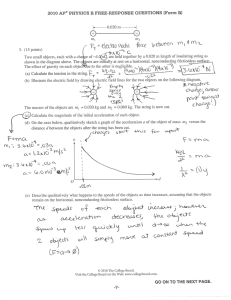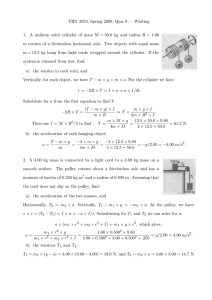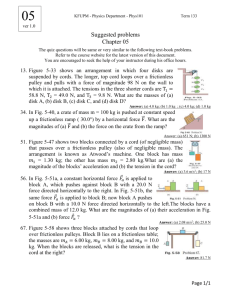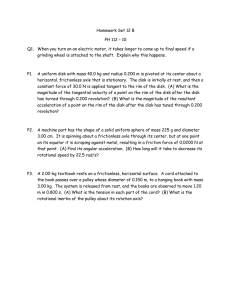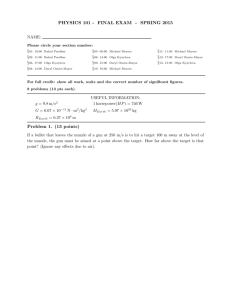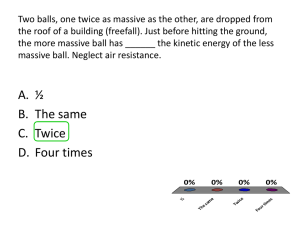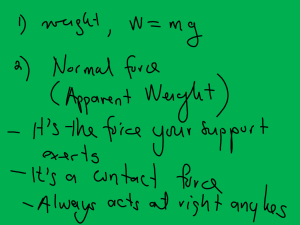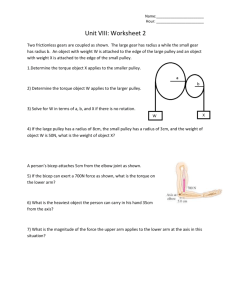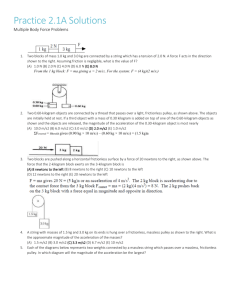Quiz 2014.09.29
advertisement
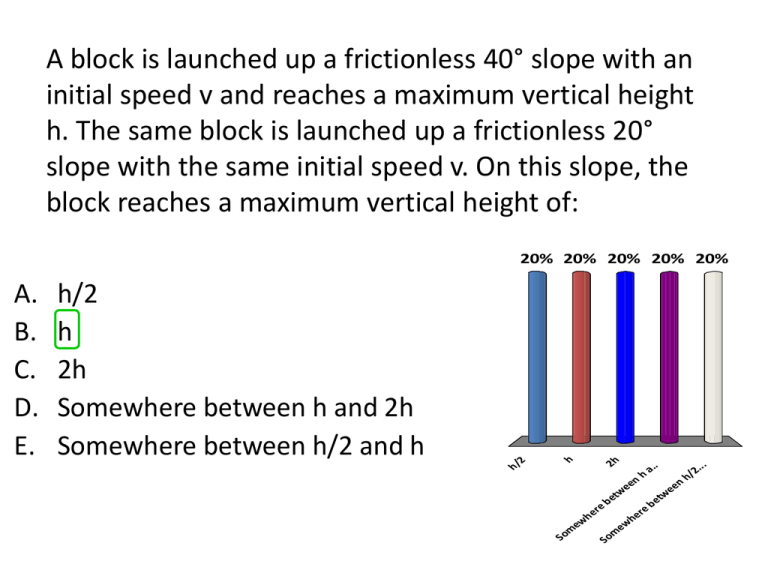
A block is launched up a frictionless 40° slope with an initial speed v and reaches a maximum vertical height h. The same block is launched up a frictionless 20° slope with the same initial speed v. On this slope, the block reaches a maximum vertical height of: So m ew he he h/ 2. .. ee n re re be be tw tw ee n h a. . 2h h ew h/2 h 2h Somewhere between h and 2h Somewhere between h/2 and h So m A. B. C. D. E. h/ 2 20% 20% 20% 20% 20% A block of mass 0.4 kg slides on a horizontal frictionless table toward a spring with a force constant 300 N/m as shown. The block hits the spring at speed 0.6 m/s. How far does the block slide from the time it contacts the spring to the time it stops momentarily? Rank Responses 1 2 3 4 17% 17% 17% 17% 17% 17% 5 6 Other 1 2 3 4 5 6 A small block of mass 5.0 kg slides down from the top of a rough inclined plane that has a vertical height 2.5 m. The block strikes a horizontal spring with force constant 200 N/m and compresses it a distance 0.12 m before it comes to a momentary stop. How much energy is lost in this process (due to friction)? Rank Responses 1 2 3 4 5 6 17% 17% 17% 17% 17% 17% Other 1 2 3 4 5 6 Rank Responses 1 2 3 4 5 6 Two masses, m1 = 10kg and m2 = 5kg, are hung over a pulley as shown. Assume that the pulley is massless and frictionless, and that the rope does not slip. The blocks are held motionless and then released. Determine the magnitude of the velocity of m1 after it has fallen a distance of 3 meters. 17% 17% 17% 17% 17% 17% Other 1 2 3 4 5 6
